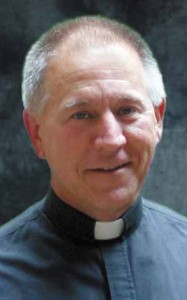By Fr. Bud Grant
Recently I visited an exhibit that explored the concept of nature in Italian art from the Renaissance through the Mannerist period. As it happens, the curators were not really concerned about the natural world around us, but how “natural” (or not) a given artist chose to represent his subject. Andrea del Sarto, for example, along with his protégés Pontormo and de Rossa, eschewed the photographic exactitude of their predecessors in favor of a more evocative use of pastel colors, theatrical positioning, and even elongated anatomy. The result is not “natural” in the sense of reflecting reality, but rather intending to elicit dramatic surges of emotion from the viewer (or pilgrim, as many of these images are religious in theme). Such images, we could say, hint at the supernatural. That this works is indisputable. A medical doctor from Florence even coined a phrase “the Stendhal Effect” to describe the phenomenon she encountered in her hospital of tourists having been physiologically overwhelmed by the experience of the city’s art (Stendhal describes his own breakdown in his Florentine journals).

The artist is clearly seeking to do more than mimic nature, but certainly a case could be made that nature itself — independently of artistic renderings of it — provokes in us a sense of the divine. I would imagine that most people could, without too much effort, recall a place in their experience the mere memory of which triggers a sense of tranquility or a lifting of the senses into what Umberto Eco calls “the sublime.” Such places need not be the majestic mountains or the brooding oceans. Prosaic cornfields under a cloud-studded Iowa sky can be, if we pause a moment, every bit as inspiring of awe.
Henry David Thoreau, no great supporter of organized religion, described the forests surrounding his native Concord as his church and his journals describe transcendent experiences that most of us familiar with the sacramental life of the Church would immediately recognize as spiritual.
Jesus spoke so frequently in parables that spring from nature’s impulses that it is inconceivable that he did not himself experience his divine parent through creation. It is worth commenting, by the way, on the fact that these parables — not unlike the work of great artists throughout history — are as likely to draw their images from bucolic as wild nature without discrimination. The point here is that nature’s capacity for revealing the creator through its beauty is not necessarily hampered by the landscape having been worked by human industry.
In either case, we do seem to be hard wired to be stimulated to transcendence by an attentive experience of the physical world around us. John Muir even goes so far as to suggest that “in wilderness is the salvation of the world.” In other words, we seem to need nature: we need it to exist independently of our use of it and we need to place ourselves into it, at least occasionally, and at least to some degree, in order to feel genuinely alive, healthy and connected.
In the end, then, the very existence of a natural world around us, unfiltered by art, un-interpreted by anyone, save for our own awareness, turns out to be important. Admittedly, this case for an environmental aesthetic is still instrumental (that is, it argues that nature has value because nature is useful to us without claiming exactly that nature has intrinsic value apart from its utility to us). Yet it is an interesting utility, the same, in fact, of art itself … we use it surely; we gain from it without question, but our consumption of beauty does not reduce the overall availability of that resource. Beauty is like love: the more we experience it, the more there is of it to go around. If nature’s beauty inspires us (in the most literal sense) then it simply follows that we should make ample use of such a commodity and protect it as we do other priceless works of art.
(Father Bud Grant is a professor of theology at St. Ambrose University in Davenport.)








